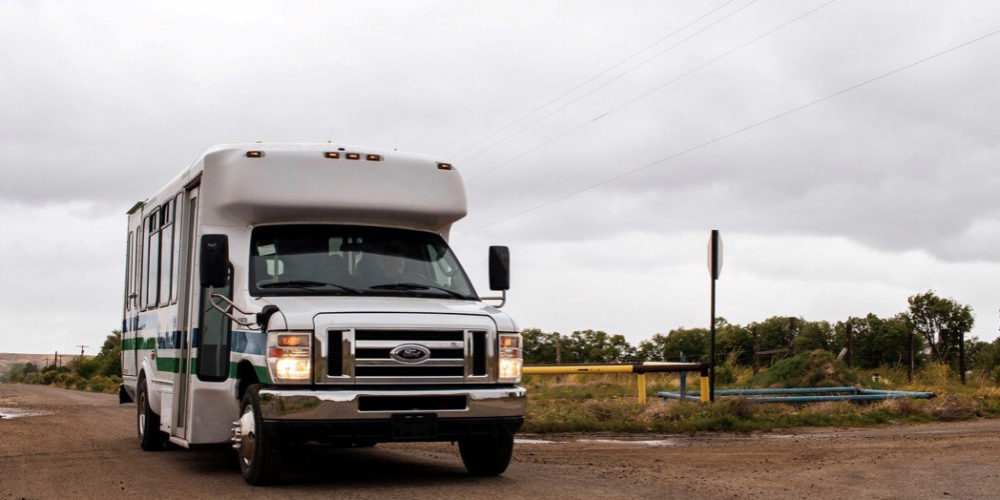Curious about the issues and topics that are foremost on the minds of university transportation researchers, the U.S. Department of Transportation, and professionals from highway, public transportation, freight, and alternative transportation? NADTC staff attended the second annual National Mobility Summit of the U.S. Department of Transportation University Transportation Centers this spring in Washington, D.C., and this blog summarizes key takeaways on the areas of research focus in coming year.
Dr. Kevin Womack, Director of the U.S. Department of Transportation Office of Research, Development & Technology, noted in his opening remarks that U.S. DOT is planning for more industry involvement in research moving forward, and with changes in workforce development, and movement away from transportation being the domain of engineering, research will continue to become more multi-modal in nature.
The one-day summit included updates on university projects from:
Carnegie Mellon University
Florida Atlantic University
Montana State University
Morgan State University
New York University
North Dakota State University
Portland State University
San Jose State University
University of North Carolina at Charlotte
University of Washington
In addition to university representatives, the summit incorporated federal and industry viewpoints on shared mobility, road safety, autonomous vehicle technology, transit, freight movement, and delivery logistics.
Key Highlights
University Research
Topics currently being examined by universities include:
- Aging populations and assistive technologies for older adults and people with disabilities
- Connected vehicles and connected cities technology
- Electronic and distance learning opportunities
- Food deserts and access to nutrition
- Freight mobility and logistics
- Next generation accessible rail cars
- Providing more transportation choices in rural areas or determining if urban solutions will work in a rural area
- Vehicle balancing for car-sharing
- Workforce development in the Navajo region
Industry Perspectives
Summit panels included updates and perspectives on advancements in the areas of shared mobility, autonomous vehicle technology, transit, and goods movement.
Shared Mobility
- Scooter use has increased exponentially—for example, Charlotte, NC has experienced a 10% increase in scooter use over bikes.
- Nine percent of retail shopping is done online. The effect is seen at the curb when consumers shift to mail order.
- Mixed mobility in the future has to do with moving people not cars.
Federal Highway Administration and Vehicle Movement
- FHWA is looking at Next Generation Transportation Management and tools to provide commuters with options.
- Automation: vehicle connectivity, speed management
- Work zone challenges
- Cooperative Automation Research Mobility Applications (CARMA) – software that informs vehicles about what’s ahead and what to expect, the CARMA software platform equips vehicles with the ability to interact and cooperate with infrastructure and other vehicles
- Curb share management research
- Accessible Transportation Technology Research Initiatives (ATTRI) – on-going research on accessibility for the complete transit trip. FHWA working in coordination with FTA.
- Every Day Counts program – Innovations to address current transportation infrastructure issues.
Autonomous Vehicle Technology
- 2017 appears to have been the peak of hype about self-driving vehicles.
- The current reality: levels of automation will vary and the human will be there as backup.
- Ongoing challenges and public questions regarding safety and implications of technology use
- Toyota Research Institute has several research efforts involving Chaffeur (full automony), Guardian (driver-monitored autonomy), and blended envelope autonomy (combining and coordinating skills and strengths of the driver and the vehicle), and tests with dual steering vehicles.
- Technology is progressing just not as fast as many anticipated.
Transit
- Traditional public transit is experiencing industry disruption. Different modes are fitting different needs.
- Mobility partnerships are becoming more important to broaden the options available.
- Bus fleets have changed over time—half of U.S. bus fleets are now alternative propulsion.
- Changing public directives for U.S. cities include congestion pricing.
- Education needs of workforce are changing, and the industry is facing a workforce shortage and shortage of prospective employees with technical training.
- Transit as an industry is looking at how artificial intelligence (AI) will disrupt operations and vehicles.
- Training and development: increasing focus on community college programs
- Paratransit demand and growth is higher than fixed-route transit.
- Aging and accessibility needs are driving areas of research on vehicle accessibility, impact of multi-modalism on health and wellness, voice apps, and more accessible transportation types (e.g., e-scooter with seat).
Goods Mobility
- Railway topics include positive train control, advanced crossing protection at grade crossings.
- Trucking industry is facing an aging workforce with a lack of younger drivers entering the field; however, the industry has seen a slight increase in 25 – 34 age bracket.
- Truck parking in peripheries of urban areas, and the demand for safe truck parking, is becoming a priority issue for drivers.
- Urban goods congestion cited as one of the price tags that comes with decline in brick and mortar establishments, loss of department stores, and movement toward a delivery economy.
- Strategic issues to address: driver turnover and retention, street configuration, curb policies.
Want to learn more about research news and industry initiatives?
While this blog provides a snapshot of the hot research topics on the table, it is by no means comprehensive! If you would like to track ongoing transportation research by the federally funded university transportation centers and stay abreast of transportation research news, visit Mobility 21 and Traffic 21 and sign up to receive the e-news. For NADTC’s most recent staff research on additional trending transportation topics, download the 2018 Transportation Trends Report.
Transit photo credit: Capacity Builders, Inc. in Farmington, New Mexico


Leave a Reply